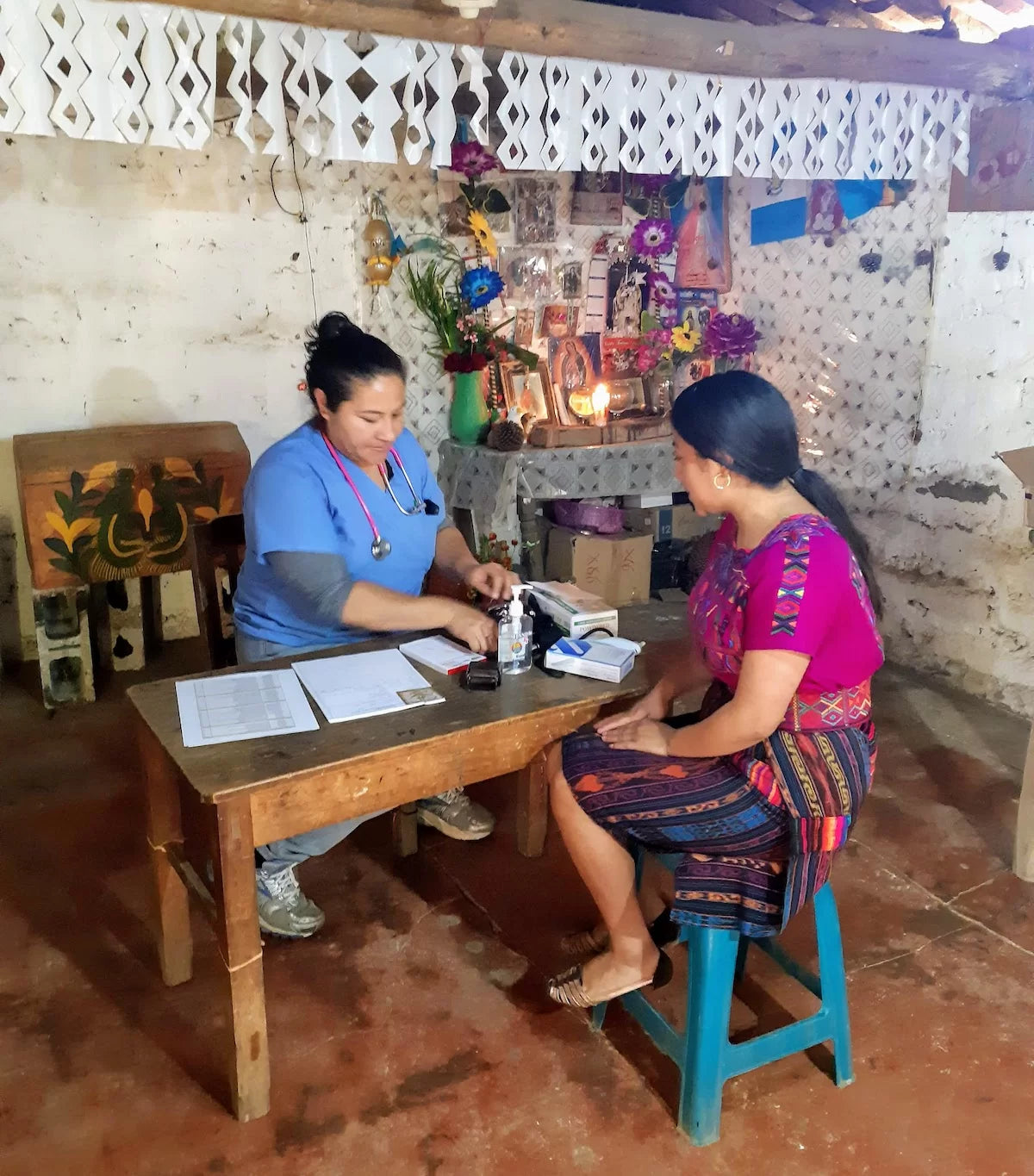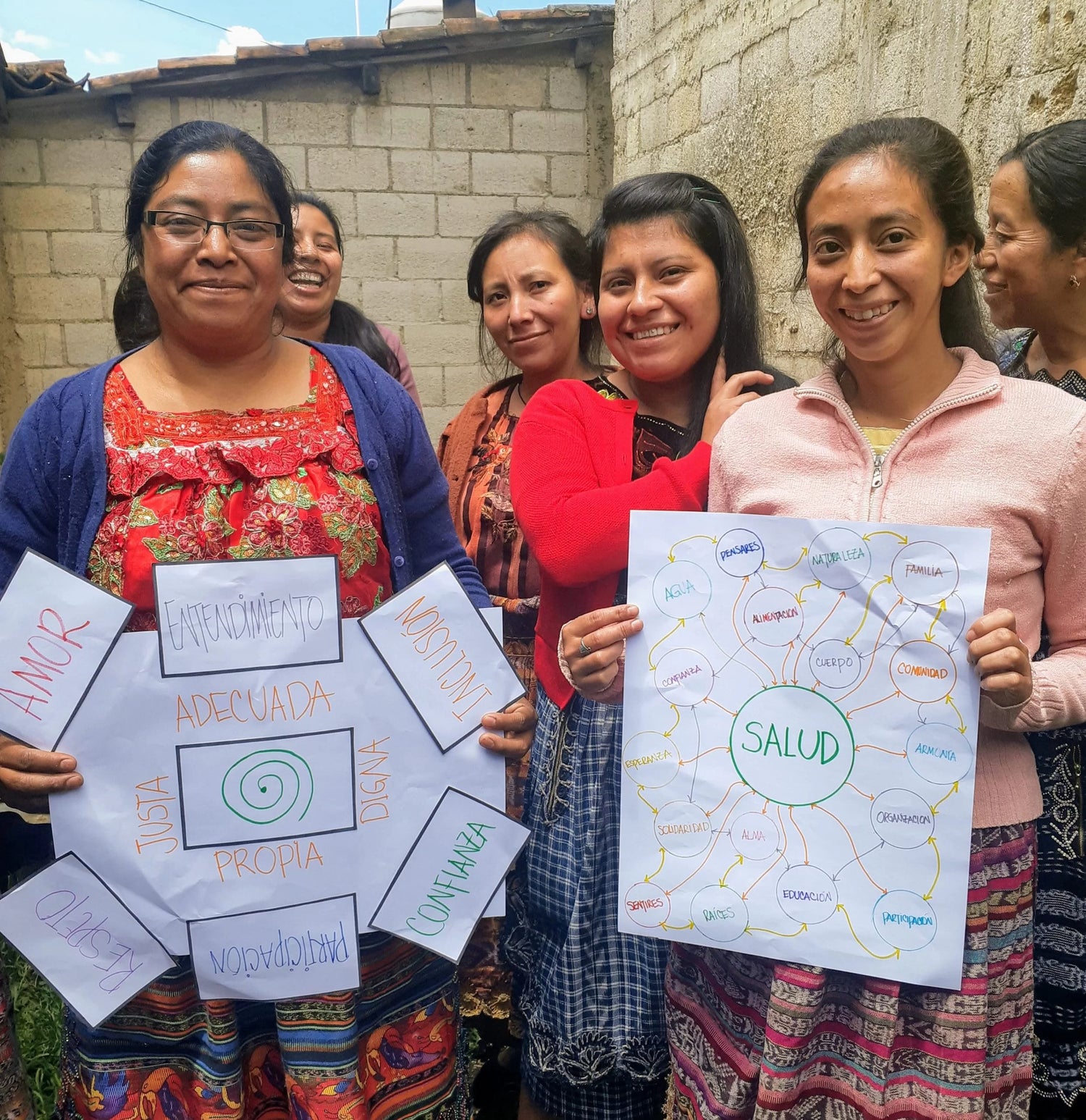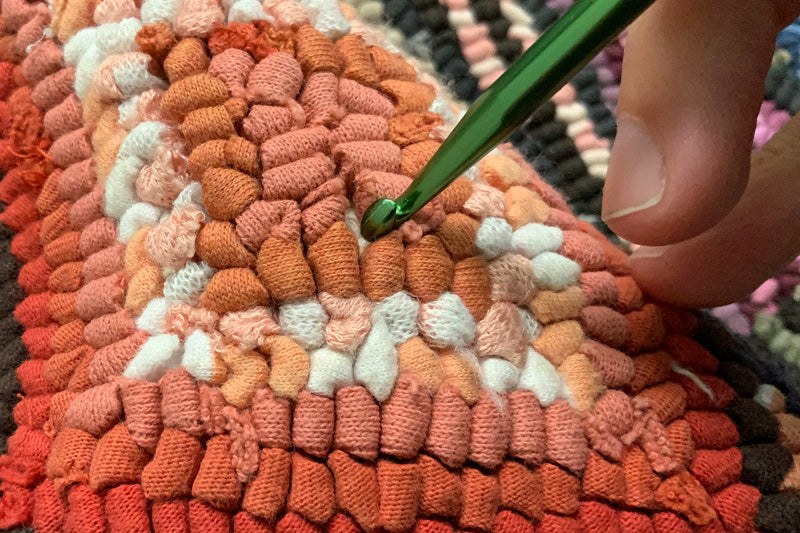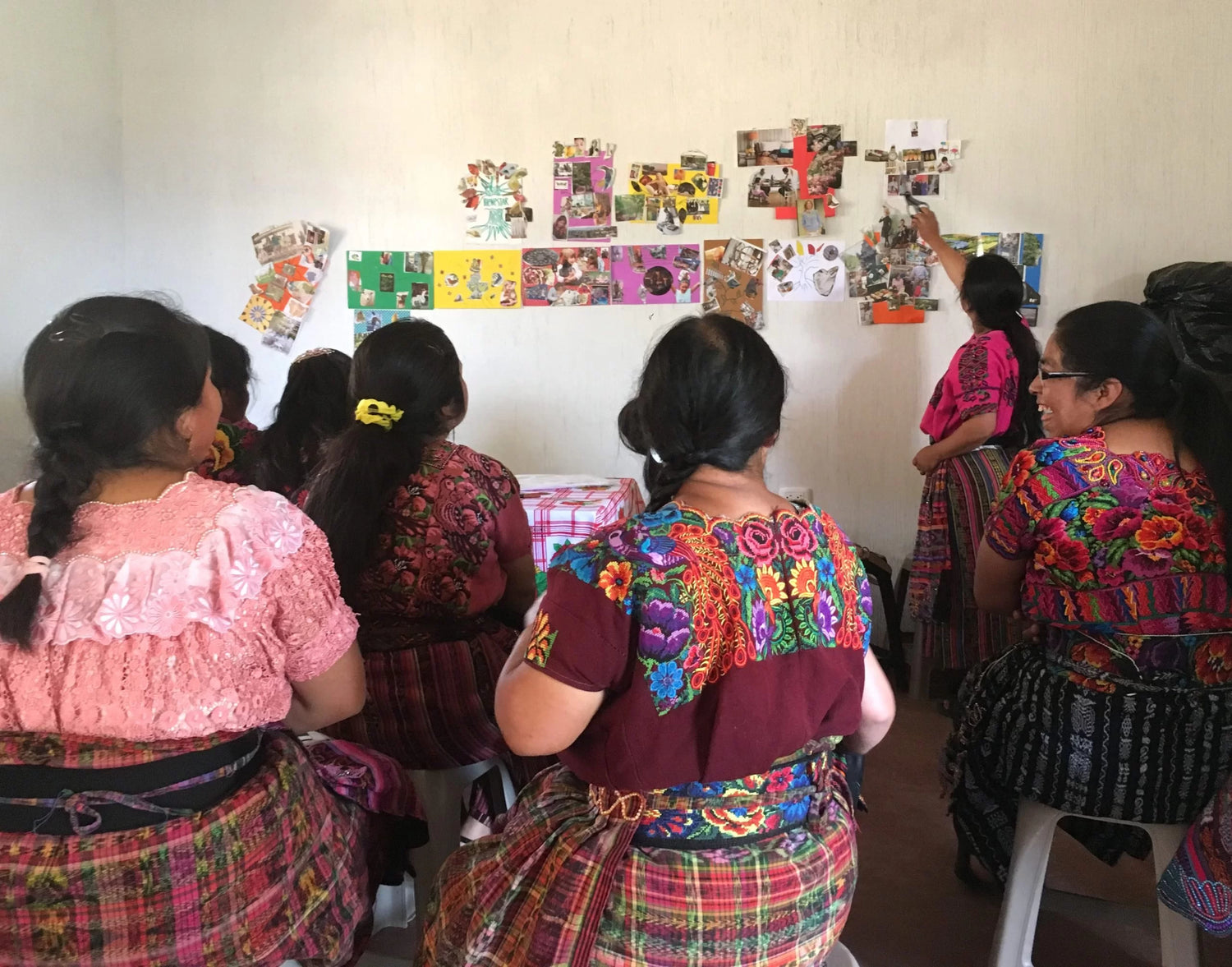Healthcare & Well-being Program
"Like a flower that sprouts, grows, and flourishes when planted in good earth, our well-being depends on mental, physical and social health, and a healthy environment that encourages us to flourish each day”
– Micaela Churunel, rug-hooking artist
This program offers holistic and sustainable healthcare services to the artists and their loved ones in the areas of family and preventive medicine, and women’s health. A co-creation between the artists, Multicolores and ASSADE- it aims to design and construct the ideal health model for all participants. Taking into account biological, cultural and psychosocial aspects, the program uses ancestral Maya healing techniques and Western medicine with the goal of achieving better results in health and encouraging skills development for social, economical and environmental changes in the communities.

Mobile Clinic & Pharmacy
A temporary clinic installed in the artists’ communities, offers health services- similar to those of a primary care facility, on a bi-monthly basis. The program encourages the use of traditional medicine and provides access to affordable, high-quality pharmaceuticals, offering personalized options to fit the needs of each community.
The medical team prioritizes trust, inclusion and close patient-doctor relationships. Interpretation in K’iché’ and Kaqchikel is offered as required during consultations, as well as visual aids. People from all ages attend the clinic- the artists plus up to 10 beneficiaries participate in the program. Some artists and their family members volunteer during clinic days, and all the artists help to coordinate logistics. A direct line with a doctor is available for follow-up care in between visits.

Health Education
Educational activities that integrate culture as the main element are offered in each community with the same frequency. The topics of the workshops, talks and other activities are personalized for each group, based on the interests identified in the clinics. The artists choose their learning priorities and invite people from their communities to participate. The topics include: human body, prevention, chronic disease management, women’s health, nutrition, hygiene, relaxation techniques, among others.
“The workshops complement what we learn from the doctors at the clinic. I realize how important it is to have the correct information- I know now that I had some misconceptions about health-related topics and learning from the facilitators has made me feel more at ease. My favorite topic so far is ‘breast cancer prevention’. I had heard about the self-exam before but I learned a lot from the nurses, when and how to properly do it to prevent this disease.”
-Hilda Tzunún, rug-hooking artist

Occupational Health
Ergonomic tools and adequate workspaces
Periodic visits to the artists’ communities are carried out to monitor how their work impacts their health. Subsequently, recommendations to optimize their workspaces and high-quality ergonomic tools to reduce health risks are offered. Multicolores has partnered with local wood-workers to create tools that fit the artists’ needs. Tools like tables, cushioned chairs, shelving units, and more recently, ergonomic hooks and frames have been offered as part of this program. The investment is split 50/50 between the artists and Multicolores.
Prevention Exercises
Workshops for a healthy, long working life through good practices are offered to the artists, who have learned about preventing injuries to hands and shoulders from repetitive movements and the importance of good posture while creating their art. The artists are aware of the hours they spend working each day and do exercises to prevent and alleviate symptoms caused by chronic strain.

Designing well-being: a participatory approach
As a contribution for one year of coverage of this program, each participant artist designed a unique rug inspired by the theme of well-being. This investment is matched by funds from Multicolores and ASSADE to cover the full cost of care for the artists and up to 10 family members, neighbors and friends.
The design process for these pieces included a group session that facilitated the reflection to answer the question ‘what does well-being mean to you?’, followed by each artist’s individual approach to design. The results have been powerful expressions of individual and collective health, harmony, balance and fulfillment.
